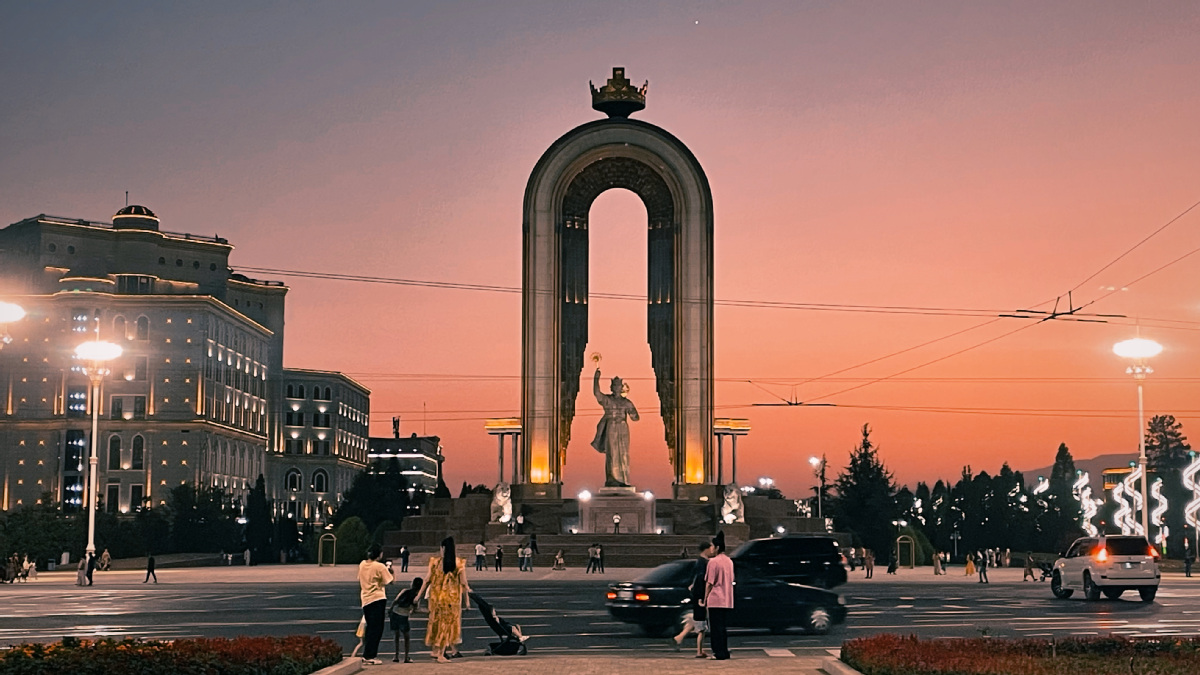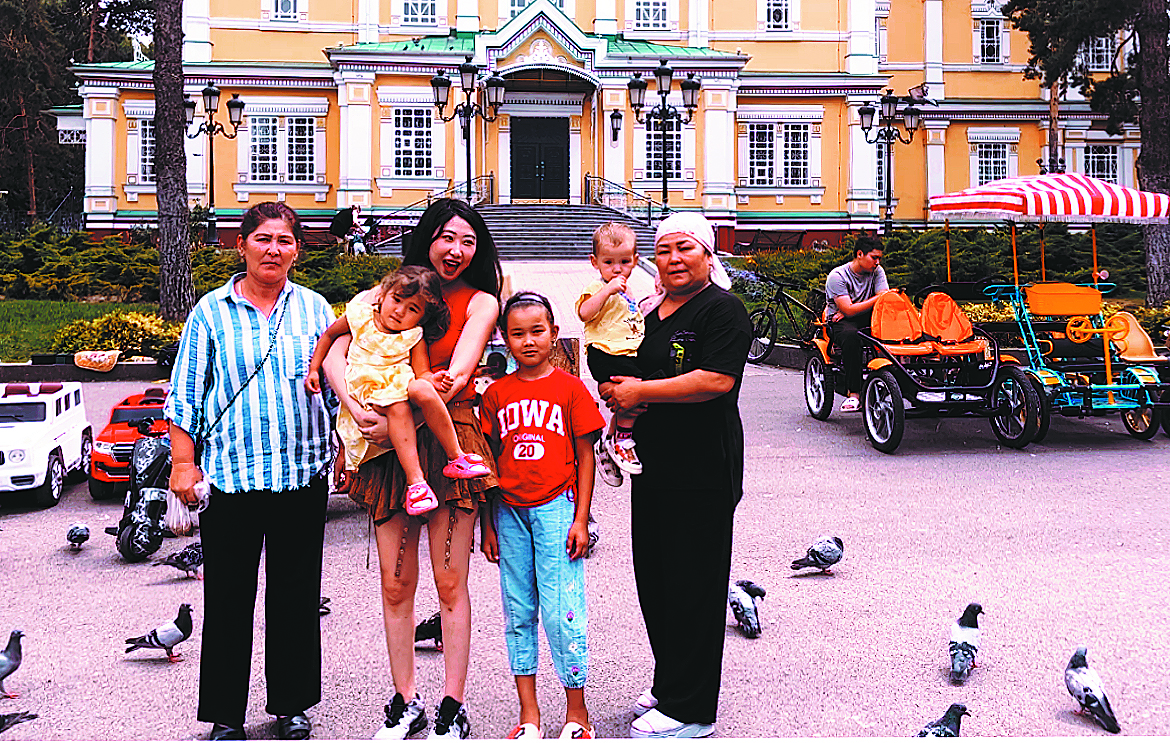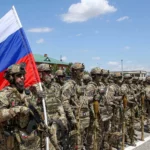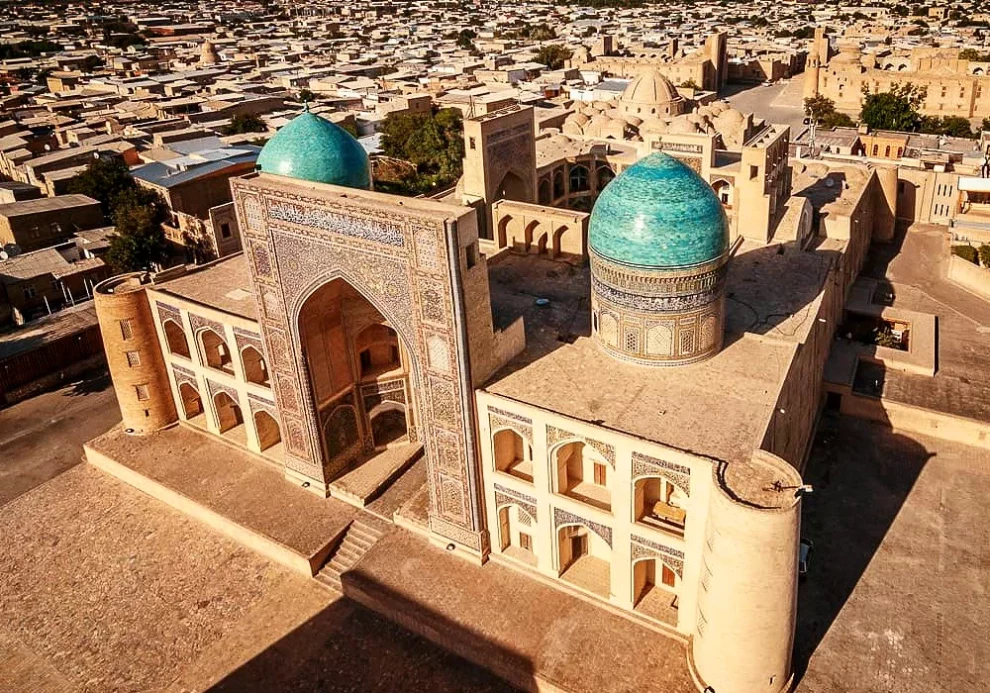Under spotlight of BRI, region’s travel boom further fueled by visa-free policy
It is as old and venerable as Rome, the eternal city, and Athens, the city of wisdom, yet Samarkand, the pearl of the Muslim world, draws only a fraction of the attention that those two capitals do.
Indeed, while most people know that Rome is in Italy and Athens is in Greece, few would have even heard of Samarkand, let alone know that it is in Uzbekistan.
That very anonymity, largely a result of being all but ignored by the world’s travelers, may be what is helping fuel a surge of Chinese tourists to the countries of Central Asia, where they are discovering the marvels of Samarkand and other ancient and unheralded treasures.
This new interest in the region was helped 11 years ago when President Xi Jinping unveiled in Astana, Kazakhstan, a proposal that would eventually be known as the Belt and Road Initiative. The spotlight was shone on this corner of the world and sparked travelers’ passion to discover new attractions and adventures.
“Before going to Central Asia I had only a vague idea of what it is like,” said Yu Shengnan, 31, an office worker in Guangzhou, Guangdong province.
“I chose to go there because I was planning a low-cost world trip and realized that cities such as Almaty and Samarkand were affordable transit points for traveling through the Middle East.”
Yu, who completed her 300-day around-the-world trip last year, said she was delighted by what Central Asia had to offer.
“For me, Central Asia was full of wonderful surprises. There’s a lot of stunning natural landscapes and rich historical heritage to explore. The architecture is diverse, with Soviet-era style to be found next to magnificent mosques. I’ve been to many Arab countries, but the mosques in Samarkand are astonishing. Central Asia really does provide an unforgettable experience.”
The visa-free policy adopted by China and Kazakhstan last year has added to the allure of Central Asian countries for Chinese tourists, who can now stay in Kazakhstan for up to 30 days visa-free, and in Uzbekistan for 10 days. Last year, about 217,000 Chinese tourists visited Kazakhstan, a twelvefold increase from 2022, according to official figures.
As 2024 has been designated the Year of Kazakhstan Tourism in China, an even larger influx of Chinese tourists is expected to visit the country.
In the first quarter, Central Asia witnessed a significant rise in travel, with Chinese visitors increasing by more than 300 percent year-on-year, according to Trip.com, a travel service platform in China.
Most of the visitors are millennials and Generation Z, who are drawn to destinations such as Almaty in Kazakhstan, Tashkent in Uzbekistan, Bishkek in Kyrgyzstan, and Dushanbe in Tajikistan.
Central Asia is essentially attracting two types of tourists, Yu said, namely those who view it as a cost-effective transit point on long trips and those who seek niche travel destinations after visiting other countries.
“It’s a place where you can experience deep historical and cultural immersion,” she said.
Qian Shihao, 29, an analyst in Shanghai, who visited Central Asia 10 months ago, his first overseas trip after the pandemic, said he wanted a destination off the beaten track after having traveled to more than 20 countries.
“I love visiting places with historical depth. I chose Samarkand because I hadn’t come across anyone in my social circle who had been there. From there I explored other cities in Uzbekistan and Kazakhstan.”
Qian said he was most impressed by the “history enthusiasts” he met during his 15-day trip.
“These Chinese tourists come to Central Asia intent on seeing history. They visit ancient ruins and cities that have vanished, and are often surrounded by grazing land or arid desert,” he said.
“Locals are mostly blase about these surroundings, but for those Chinese tourists who come here with wide-open eyes there are invaluable fragments of history to be found.
“Here and there, you can even find shards with inscriptions on them. You’ll never get this in Europe or Southeast Asia.”

Historic links
For many Chinese tourists the deep historic connections between China and Central Asia are a significant draw.
Tales and depictions of the celebrated monk and traveler Xuan Zang (602-664) and the missions of the diplomat and explorer Zhang Qian, an envoy in the Han Dynasty (202 BC-220 AD) to the West, can be found in local museums, Yu said.
“You’ll even come across street artists painting the story of Zhang on hand fans,” she said. “In China, such scenes are rare these days, but here they continue to keep these stories alive. It’s a unique moving experience, unlike anything in Europe or the Middle East.”
Yang Hongchao, 35, an algorithm engineer in Shanghai, also chose Central Asia as an overseas travel destination following the pandemic.
“Growing up in Xinjiang I was familiar with the Tianshan Mountains in China but curious about their extension into Central Asia,” Yang said.
“Even though we Chinese are right next to Central Asia, its countries are largely a mystery for us. So I decided to spend three months exploring them.
“Central Asia’s landscapes are stunning and often underestimated. The people are friendly, and home-stays in Kyrgyzstan and Tajikistan offer a unique opportunity to experience local life. This has left a lasting impression on me. Some of my friends now want to follow in my footsteps.”
Ardak Akymhan, 35, from Hami, Xinjiang Uygur autonomous region, who has lived in Almaty for more than 10 years, said the number of Chinese tourists to Kazakhstan this year has increased sharply.
“Last year, few companies needed bilingual guides, but now one company alone is recruiting 50 to 100 Chinese-speaking guides,” said Ardak, who has been a Chinese tour guide in the capital city for two years.
She attributes the growing number to the visa-free policy and the promotion of Kazakh culture on Chinese social media platforms such as Douyin and Xiaohongshu.
“Previously few Chinese regarded Kazakhstan as a travel destination. They’re now being attracted by the great scenery and cultural riches they see on social media,” she said.
Cai Jiaxin, 32, who has worked in tourism for nine years, said that as early as 14 years ago the shoots of blossoming tourism in Central Asia were beginning to appear.
“Our travel agency started offering Central Asia tours in 2010, but the groups were small and mainly business-oriented. However, with the Belt and Road Initiative, interest in Central Asia has visibly grown. After the China-Central Asia Summit in Xi’an last year there has been a surge in interest and in the number of tour groups.”
The visa-free policy has led to a 30 percent year-on-year increase in the number of tour groups, Cai said.
“During the May Day holiday, many tour groups and trade exhibition groups headed to Central Asia. This year many more Chinese trade exhibition groups are heading there to showcase their products in exhibitions and explore business opportunities, boosting trade between China and Central Asian countries.”

Deepening relationship
Zou Tongqian, the first Chinese vice-rector of the “Silk Road” International University of Tourism and Cultural Heritage in Samarkand, said there are many reasons for the recent travel boom in Central Asia.
“It’s closely tied to the deepening relationship between Central Asian countries and China,” Zou said.
“At last year’s China-Central Asia Summit, China and the five Central Asian countries agreed to boost cooperation in many areas, while emphasizing tourism cooperation and the creation of China-Central Asia travel routes. The visit of the Uzbek president to China and the frequent visits of Chinese governmental delegations to Central Asia have all boosted the two sides’ business and tourism cooperation.”
An increase in the number of flights — including direct flights between China and Central Asian countries boosted by government policies — has also contributed greatly to making Central Asia more attractive as a tourist destination, Zou said.
In addition, the region has a distinct advantage over other popular tourist destinations such as Japan, Europe and Southeast Asia, because “many well-known Chinese stories and legends are set in this region, providing a sense of familiarity and connection for Chinese tourists”, he said.
Rapid economic growth in Central Asia has also given a fillip to regional tourism, he said.
“When I first came here in 2019 few people had cars, but now road traffic is hectic,” Zou said. “Increased car ownership and the extremely robust real estate market have also contributed to the tourism boom.”
Challenges ahead
However, even against this backdrop, the continued success of the nascent industry is by no means assured, particularly given the region’s lack of mature tourism infrastructure.
The problems that most Chinese tourists complain about include language barriers and patchy services such as transportation and accommodation.
After traveling in the region for three months, Yang, the algorithm engineer, called for better regulation of the industry.
“I once hailed a taxi and was overcharged, and I have had to double-check to ensure I’m not being overcharged when I exchange currency. The other thing is that with most people speaking Russian, communication can sometimes be very difficult,” he said.
Qian, the analyst, said: “When I first walked into Tashkent Airport I had the distinct feeling that Uzbekistan is simply not equipped to handle mass tourism. None of the signs seemed to be for tourists, there was no clearly marked currency exchange counter, and no obvious signs provided tourist information. Visitors had to use hand gestures to ask for help or they had to search online.”

Nevertheless, asked if he would return to the region, Qian was unequivocal.
“Definitely. Central Asia has really got me hooked. The local culture is like a melting pot, blending obvious Western and Eastern influences that coexist harmoniously,” he said.
“I believe Central Asia will eventually become a highly popular tourist destination, and I’m sure that as this happens the Silk Road will be reflected in its former glory.”
Source: China Daily















